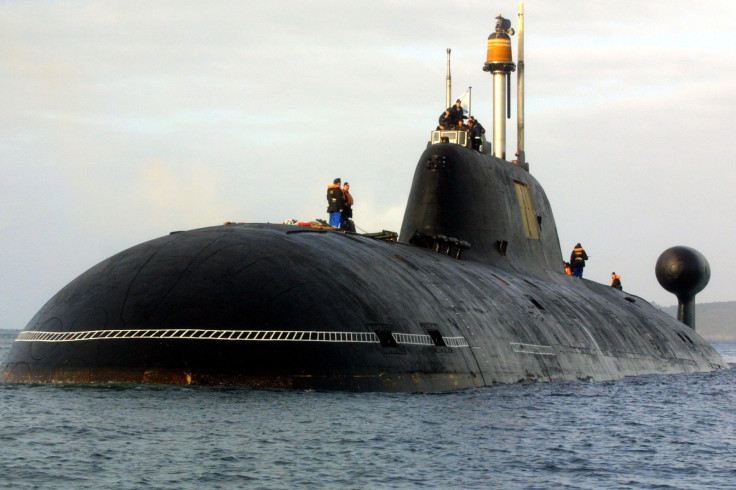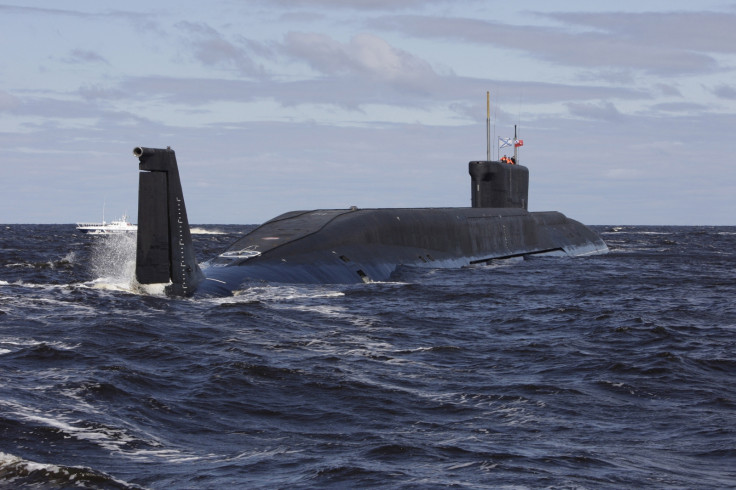Declassified Cold War files reveal how the Soviets sneaked up behind enemy submarines without sonar
Russian engineers developed SOKS, or a "wake object detection system", able to follow enemy submarines without using sonar.

The Soviets back in the day did not have access to advanced electronics during the Cold War era, which was why their submarine tech was thought to be sub-par. But that only tells you half the story.
Newly-declassified files report on how crafty Russian engineers at the time were able to continue to play cat-and-mouse games deep underwater by following the trail submarines left behind. In one incident, a Russian submarine reportedly followed an American sub undetected for six days.
Sonar was the go-to method for the Americans when it came to submarine tracking technology during the Cold War, which was something that the Russians did not have.
How then did a Soviet sub manage to not only detect an American one, but also stay undetected and follow it for six days? "System Obnarujenia Kilvaternovo Sleda" (SOKS) or "wake object detection system" was a technology that was developed in place of sonar by the Russians.
It was a non-acoustic method that the West ignored because they thought it was not as effective. In fact, one of the West's intelligence reports from the 1970s, which is quoted by Popular Mechanics (PM), says, "It is unlikely any of these methods will enable detection of submarines at long ranges."
SOKS, however, was successful because it reportedly tracked the wake, or disturbance, in the water that submarines left behind instead of trying to 'listen' to propellers or engines. They are easily noticeable as spikes and cup-like protrusions on the leading edge of Russian submarine fins, according to PM.
While the Russians had always claimed to be able to follow US submarines, it was usually dismissed as Russian propaganda, notes the report. Since research on this tech was classified by the US, even scientists were not aware of it.
Rumours were also inconsistent at the time. Without knowing how it worked, and if it worked at all, and what SOKS was looking for in the water, the Americans had no real way to counter it. It was believed that SOKS was used to read changes in water density, or detect radiation, or even used a laser sensor, but no one knew for sure.
The SOKS system was not one device. It was a mix of several instruments working together, at least that is what the declassified files say, reports PM. SOKS had one sensor to identify "activation radionuclides", a faint trail of radiation that nuclear plants inside subs left behind. The "gamma ray spectrometer" was another instrument that read trace amounts of radioactive elements in seawater. "The Soviets had reportedly had success detecting their own nuclear submarines [several words redacted] with such a system," the document says.
Apart from radioactive trails, chemical trails were also left behind by submarines, notes the PM report. Sacrificial anodes – that prevent corrosion on submarines – leave a trail of zinc, oxygen generators leave behind hydrogen, and flakes of nickel get chipped off from cooling pipes in subs. All of these chemicals can be traced back to a submarine, and SOKS was looking for all of them.
Nuclear reactors and submarine engines are also incredibly hot, so there is a hot trail to follow as well. Several thousand gallons of coolant is needed to keep a nuclear sub stable and the sea water that was pumped through to cool off the reactors and engines was often at least 10 degrees hotter that the surrounding water. This can be detected through an optical interference system, notes PM.
"A localisation system based on this technique, capable of detecting wakes up to several hours after the passage of a submarine, could theoretically be built now," says the declassified report, but how much of this tech the Russians had at the time has not been revealed.
SOKS was first introduced in 1969 and it is still found on Russian attack submarines like the Akula and Yasen class subs.
While sonar is the go-to in submarine detection tech, there are a host of different methods that militaries around the world are taking up. With updates in detection tech over the years, it can be said that complete stealth might not really be possible anymore.
Chinese scientists in June this year, made a breakthrough in quantum magnetometers. The strange thing about the whole situation was that the scientific publication was taken down after a few days and put away after a journalist pointed out the tech's possible military applications. Using this tech, it could be possible for the Chinese to completely lock down the South China Sea, says New Scientist (NS).
The device apparently worked like a magnetometer that looks for anomalies in the Earth's magnetic field in the ocean. A submarine is essentially a large piece of metal that interacts with the magnetic field and so they can be detected underwater. The drawback is that it has a limited range, so they are only used when an enemy has already been caught on sonar.
What the Chinese had stumbled upon is based on a superconducting quantum interference device (SQUID), which can widen and lengthen the reach of a basic magnetometer notes the NS report. Till now, SQUID devices were only useable in lab conditions and are overly sensitive, says the report. They were known to get affected by even solar activity, so they are not known to be able to shut out background noise. It is not clear if the Chinese team actually overcame this obstacle and after the study was taken offline, it might not ever be released to the world again.






















